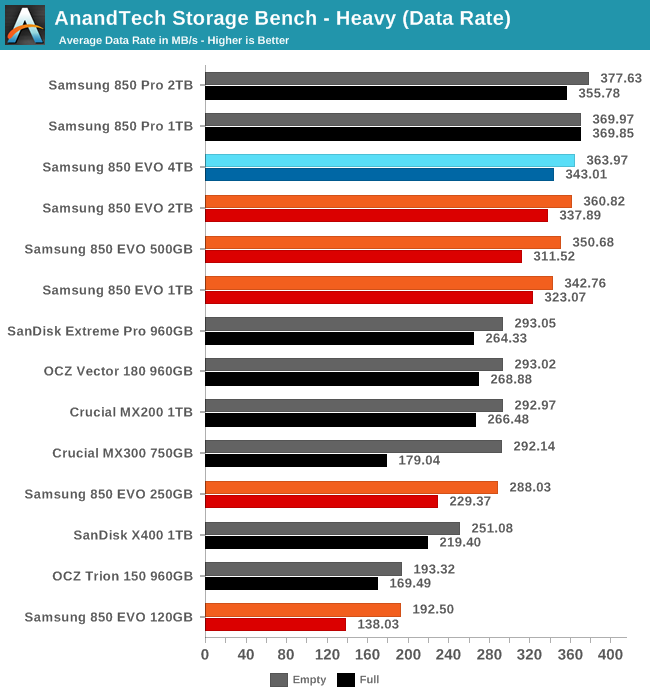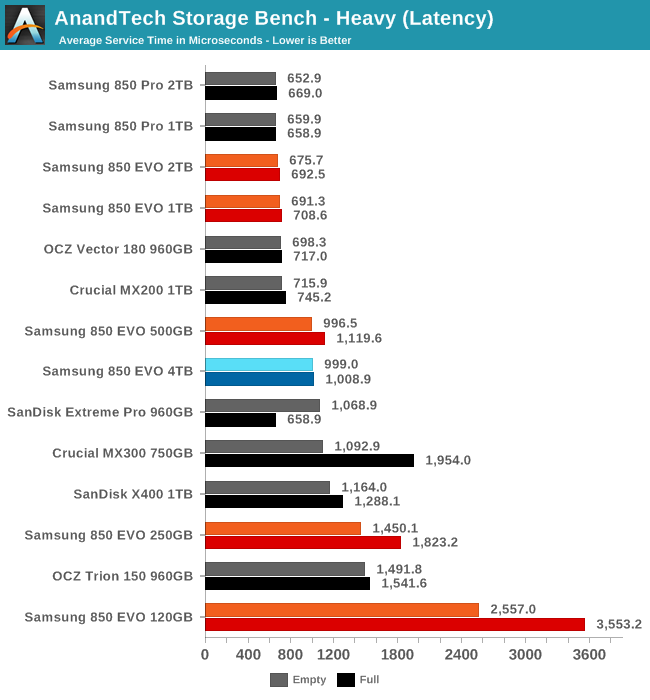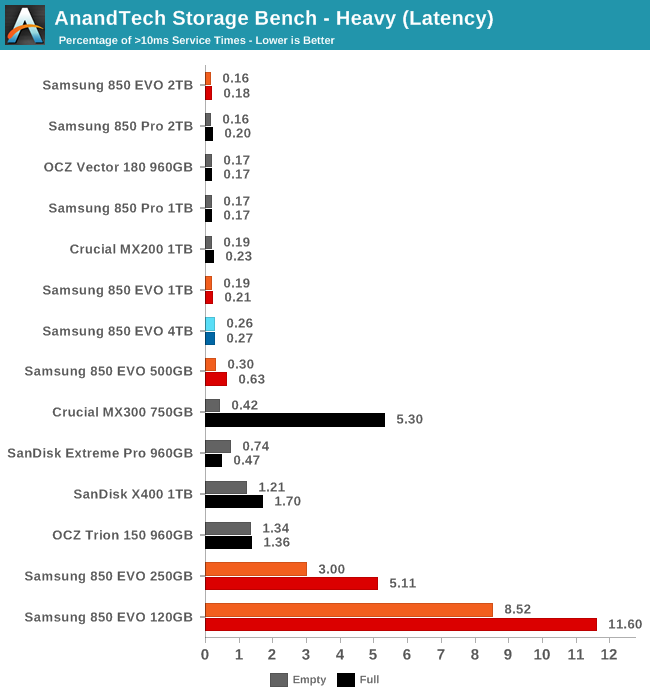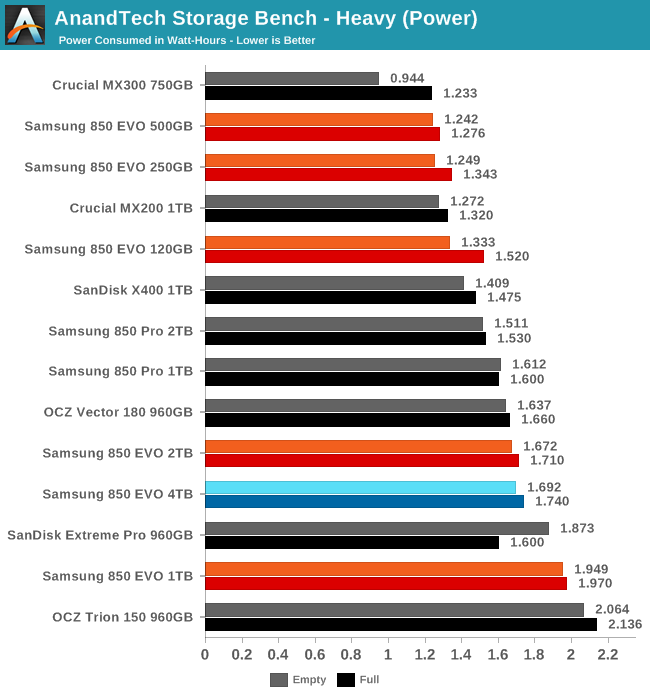The Samsung 850 EVO 4TB SSD Review
by Billy Tallis on July 11, 2016 10:00 AM ESTAnandTech Storage Bench - Heavy
Our Heavy storage benchmark is proportionally more write-heavy than The Destroyer, but much shorter overall. The total writes in the Heavy test aren't enough to fill the drive, so performance never drops down to steady state. This test is far more representative of a power user's day to day usage, and is heavily influenced by the drive's peak performance. The Heavy workload test details can be found here.

The 4TB 850 EVO is slightly faster overall on the Heavy test than the 2TB 850 EVO, so it takes over as the fastest TLC drive. The 1TB and 2TB 850 Pros are only a little faster.

Average service time of the 4TB 850 EVO has regressed somewhat compared to the 1TB and 2TB models, but it still can't be beat by TLC from anybody other than Samsung.

The quantity of latency outliers experienced by the 4TB 850 EVO places it at the bottom of the highest tier of drives and below the 1TB and 2TB models.

The 4TB 850 EVO uses very slightly more power than the 2TB, but both are much more efficient than the 1TB model and score reasonably well given the high capacity.










145 Comments
View All Comments
ACE76 - Monday, July 11, 2016 - link
http://www.fudzilla.com/news/memory/39668-mushkin-...Wait for this....any company that releases something first, price gouges.
JellyRoll - Monday, July 11, 2016 - link
The "21nm" is the BL half pitch. The EE Times article does not say that they shrunk from 40 to 21 for the overall measurement.Billy Tallis - Monday, July 11, 2016 - link
Yep, I misinterpreted that. They haven't changed the lithography, but they've shrunk some parts of the die through other means.amayii - Monday, July 11, 2016 - link
Why wasn't the Samsung 950pro taken into account in the benchmark?Is is because it is a NVMe SSD?Solidstate89 - Monday, July 11, 2016 - link
Of course that's the reason. We all know a PCI-e/M.2 SSD (whether it uses NVMe or not) will blow the pants off any SATA SSD when it comes to performance numbers.There is no reason to compare them.
amayii - Monday, July 11, 2016 - link
Ok, thanks!Samus - Monday, July 11, 2016 - link
This drive cost more than my whole PC :/Notmyusualid - Tuesday, July 12, 2016 - link
Ha ha, thanks for putting it into perspective!Made me smile.
doggface - Monday, July 11, 2016 - link
I would hope that when a manufacturer moves to a new process there would be a corresponding drop in $/GB. To be moving to 48layer and still charging ~30c is worrying. Needs to be a third of that to be anything other than a wet dream for consumer.The theorised ssd takeover of HDDs doesnt seem to be materialising yet.
Kristian Vättö - Monday, July 11, 2016 - link
A new process doesn't mean immediate cost savings. It takes time for yields to mature and even then 48L has more process steps than 32L. Ultimately it's a game of economics. Why would you sell something for 10c when the competition is charging 30c? For companies it's always all about the profit.